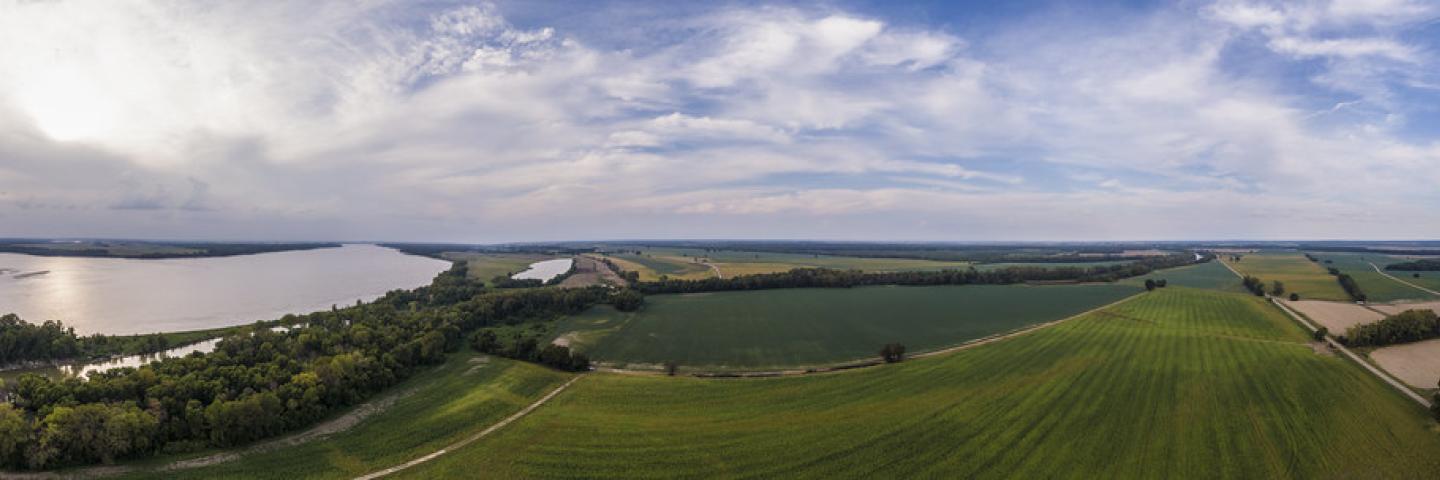
Effective beginning 5/20/2025: Please note this site is under review and content may change.
To better understand and estimate the mitigation impacts of climate-smart conservation practices, the Inflation Reduction Act invests $300 million over eight years. The work supports USDA’s broader Measuring, Monitoring, Reporting and Verification (MMRV) efforts.
These funds support a comprehensive strategy to improve data, models and tools needed for improving estimates of the impact of conservation practices on GHG emissions and carbon sequestration and to advance national reporting.
This effort is a collaboration among several USDA agencies – including the Natural Resources Conservation Service (NRCS), the Agricultural Research Service (ARS), the Economic Research Service (ERS), the National Agricultural Statistics Service (NASS), the National Institute of Food and Agriculture (NIFA) and the Office of the Chief Economist’s Office of Energy and Environmental Policy (OEEP).
Action Areas
In July 2023, USDA announced seven action areas for investment in this effort:
Establish and advance a Soil Carbon Monitoring and Research Network
Lead Agency: NRCS
USDA will collect field-based data for carbon sequestration and management practices with a focus on soil carbon, but also including a perennial biomass component (trees).For more information, see: Soil Carbon Monitoring and Research Network, and the video:
AA#1 - Soil Carbon Monitoring and Research Network with an above-ground perennial biomass componentEstablish and advance a Greenhouse Gas Research Network
Lead Agency: ARS
A strategic network of sites will collect data on the impact of management practices on greenhouse gases (nitrous oxide and methane) from major agricultural sources such as beef and dairy cattle production in confined and grazing operations, livestock housing, and land emissions.The Greenhouse Gas Research Network is organized by four sub-teams: land emissions, enteric methane, animal housing and manure, and tall towers. The work builds on other ARS efforts, including the Greenhouse gas Reduction through Agricultural Enhancement network (GRACEnet) and the Long Term Agroecosystem Research network (LTAR), to increase the temporal and spatial resolution of sampling in order to provide data for improving model and tool estimates of the impact of management practices on mitigation outcomes.
For more information, see the video: AA#2 - GHG Research Network
- Expand data management, infrastructure, and capacity
Co-lead Agencies: NRCS and ARS
To support the data needs of the Soil Carbon Monitoring Network and the Greenhouse Gas Research Network, this action area will advance data collection and tools, data design, data storage, and data delivery. The ARS support for the Greenhouse Gas Research Network builds on the ARS effort Partnerships for Data Innovations (PDI) that is designed to build data environment capacity and infrastructure within ARS. Advance options for models and tools to improve assessment of outcomes
Co-lead Agencies: NRCS and OEEP
This action area will Improve and update current models and tools, and also support multi-model comparisons to interpret results of independent models, determine areas for improvement, evaluate options, and stay current in a quickly advancing field of science. The action area recently published a Notice of Funding Opportunity for a model intercomparison and supports updates to COMET Farm and COMET Planner.For more information, see the video: AA#4 – Models and Tools
Improve NRCS conservation practice standards and implementation data to reflect greenhouse gas mitigation opportunities
Lead Agency: NRCS
This group is working to improve NRCS conservation practice standards, implementation data, and training and technical guidance to increase the greenhouse gas mitigation potential of practices and the ability to estimate outcomes from the NRCS Climate-Smart Agriculture and Forestry Mitigation Activities.For more information, see the video: AA#5 – NRCS conservation practice standards and implementation data for GHG mitigation opportunities
Improve temporal and spatial coverage of national conservation practice data
Co-lead Agencies: ERS and NASS
This action area will accelerate the collection and release of regional and national conservation trend data, provide improved and updated data for use in national greenhouse gas inventories, and fill existing and future data gaps.For more information, see the video: AA#6 - Improve temporal and spatial coverage of national conservation activity data
Advance Greenhouse Gas Inventory and Assessment Program of USDA
Lead Agency: OEEP
This group will Integrate improved data, science, and models into USDA greenhouse gas reporting efforts, and link improvements in national greenhouse gas quantification to improvements in other models and tools.For more information, see: Greenhouse Gas Inventory and Assessment Program of USDA, Agriculture and Forestry Greenhouse Gas Inventory Data Viewer, and the video: AA#7 – USDA GHG Inventory and Assessment Program
In July 2024, USDA announced progress in the quantification effort and released several presentations conducted by the leaders of each of the action areas that provide information about the work plans and progress made to-date toward accomplishing their goals.


